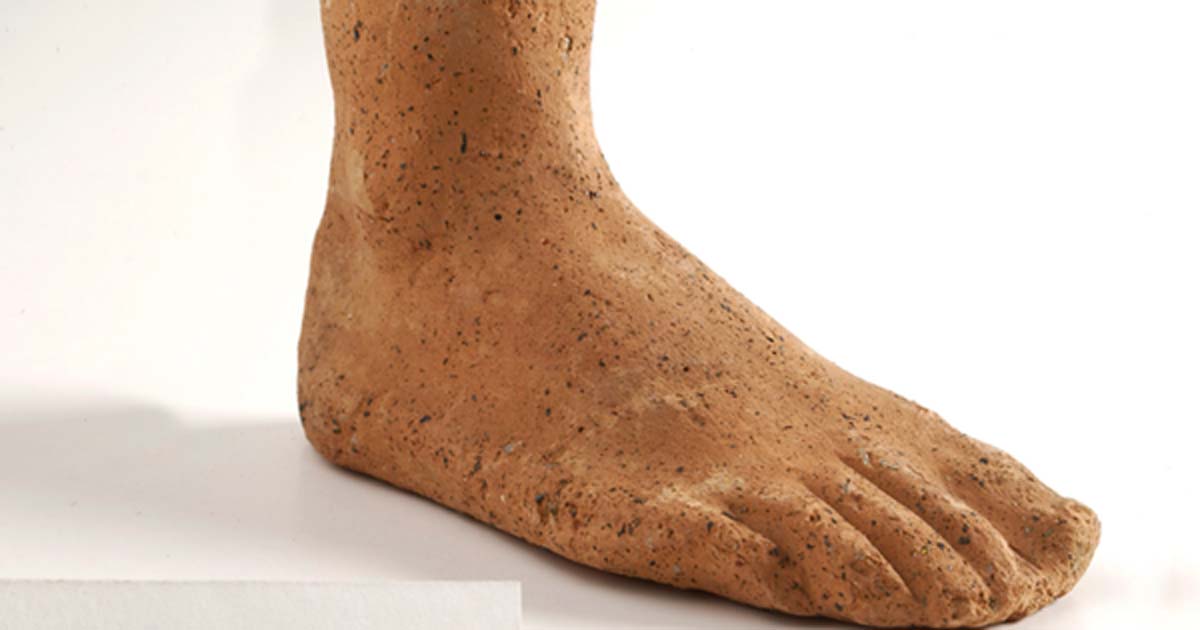Experts Try to Solve Mystery of Thousands of Ancient Clay Body Parts Strewn Across Italy
Not quite two centuries after researchers and healers started making huge strides in medicine, some diseases stubbornly elude cures. In these cases, many people resort to imploring God to heal patients. However, about 2,000 years ago, in the ancient world of Italy and Greece, there was “temple medicine”—a type of medical practice that relied more on gods, oracles and divine intervention than on professional healers.
This is one explanation for the multitudes of ancient bronze, clay, wood and terracotta figurines and body parts found in various places, including discarded in pits, around Italy and Greece—as votive offerings to the gods for healing, fertility or relief from pain. They also may have been placed in temples as thanks to the gods for healing.

Some of the figurines lend further mystery to the question of the votives’ purpose: Why was this thumb made, though anyone who’s had a horribly painful sprained thumb may know the answer well. (Wikimedia Commons photo/Wellcome Images)
They may have also been used for other purposes, said Dr. Jane Draycott, a researcher at the University of Glasgow. She told the DailyMail.com in an article about her book coming out next year about the votives:
“Potentially, you might donate a foot if you were going on a journey, or an ear if you wanted the god to speak to you. So there’s a slightly more symbolic or metaphorical motivation. They wouldn't all have been making the same offering for the same reason, so we have to try and understand that.”

Babies like this one, depicted in swaddling clothes, were often found in healing temples and sanctuaries along with uteruses. Researchers think a votive like this may have been offered for a sick infant to help make a woman become pregnant. Multitudes of womb votives have been found at temples to fertility goddesses, says Atlas Obscura. (Wikimedia Commons photo/Wellcome Images)
A lack of written sources about the anatomical votives have left their purpose cloaked in mystery. There may have been more than one reason people made them, too.
Over the centuries, archaeologists and others have dug up figurines or “anatomical votives” that represent people’s heads and parts of heads, including eyes and ears; feet; hands; legs; internal body parts and organs and genitalia. They are thought to be dedicated to the gods, but as we mentioned their exact purpose is unknown.

An ancient anatomical votive from the 4 th century BC in central Italy depicting the intestines. It may have been used to invoke the gods to heal or cure a gastrointestinal disease of the supplicant. (Wikimedia Commons photo/Anagoria)
A new book by Dr. Draycott, Bodies of Evidence, is set to be released next year. The doctor will explore the question of the anatomical votives.
An article about the votives in Atlas Obscura says many thousands of such artifacts were buried, some apparently discarded in pits, along the west coast of Italy from the 4 th century BC to the 1 st century AD. They have been found in other places in Italy and also in Greece. That article states:
One site contained 1,654 votive feet, made of terracotta. Another had more than 400 terracotta wombs. At Ponte di Nona, there were 8,395 votives recovered in the 1970s—of the 6,171 that were identifiable body parts, 985 were heads, about as many were eyes, and 2,368 were feet. Overall, at about 150 sites, archaeologists have uncovered tens of thousands of feet, legs, arms, hands, heads, eyes, ears, breasts, uteri, vulvae, phalluses, and sometimes whole midriff sections, with indistinct organs exposed.
The ones dumped in pits may have been cleared out of temples to make way for new votive offerings, Dr. Draycott tells Atlas Obscura. Before burial, they most likely covered the walls and ceilings of floors of healing sanctuaries. Some figures were clearly made from molds, but otherwise were originals fashioned by hand.
Top image: A clay-baked foot. Roman votive offering (public domain)
By Mark Miller



















